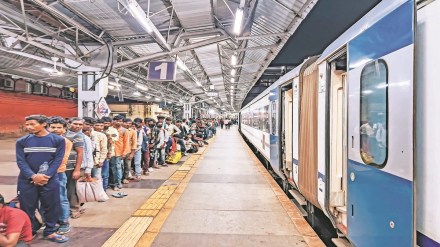When Prime minister Narendra Modi visited Japan recently, the spotlight was not only on diplomacy but also on the future of India’s transportation.
Riding on the momentum of the Mumbai-Ahmedabad bullet train project, the two countries unveiled an ambitious roadmap — a 7,000-kilometre high-speed rail network that could reshape how Indians travel, work, and live. The flagship Mumbai-Ahmedabad corridor, built with Japanese technology and expertise, is expected to begin passenger operations within the next few years.
AI for Safer Tracks and Stations
However, Indian Railways is getting tech-savvy with implementation of artificial intelligence across operations, safety, and passenger experience. For example, this year, the Indian Railways has signed an MoU with the Dedicated Freight Corridor Corporation of India (DFCCIL) for installation of machine vision based inspection system (MVIS) for monitoring the health of its coaches or rolling stocks.
The MVIS is a modern, AI/ML-based technology solution deployed on the wayside that captures high-resolution images of the under-gear of moving trains and detects any hanging, loose, or missing components. It will minimise accidents and improve safety, while the technology is expected to enhance the safety of train operations, reduce manual inspection efforts and help avoid potential accidents/ service disruptions.
After 18 people died in a stampede at the New Delhi railway station earlier this year triggered due to rush of Maha Kumbh devotees, the Railways has decided to build permanent holding zones to handle the extra rush of passengers at 60 high-traffic railway stations with a focus on areas connected to major event destinations, and use AI for crowd and crisis management. Arrows, separators, and colour-coded sections will guide passengers to designated holding areas to avoid overcrowding.
Another AI-driven measure is an intrusion detection system (IDS) that detects the presence of elephants and other wild animals on railway tracks using distributed acoustic sensors (DAS) and alerts the loco pilots about the close presence of animals along the rail tracks. Reportedly, the IDS is working over 141 km of railway routes on vulnerable locations in Northeast Frontier Railway.
The idea is to prevent the movement of wild animals near railway tracks, while innovative honey bee buzzer devices have been installed at level crossings that act as a repellent to move elephants away from railway tracks.
Smart Stations and Passenger Experience
Plans are also afoot to install CCTV cameras in 74,000 passenger coaches and 15,000 locomotives across the network this year. These cameras work even in low light and at speeds over 100 kmph. The system includes AI-powered surveillance that detects unusual behaviour and alerts authorities in real time, showing Railways’ focus on tech-led public safety.
Apart from this, there are seven major railway stations, including Howrah Junction in Kolkata, Mumbai’s Chhatrapati Shivaji Maharaj Terminus (CSMT), New Delhi Railway Station, Chennai, Secunderabad in Hyderabad and Danapur in Bihar expected to get AI-based facial recognition systems to enhance security of
the passengers. This will enhance public security and can be used to speed up ticket checking and boarding process, saving passengers long queues. The facial recognition at these smart stations will identify a person by analysing facial features that will match with the information present in the database. For instance, Sealdah Railway Station (Kolkata) authorities can check real-time video analytics to spot mischief makers.
While the benefits of AI can reach directly into passengers’ hands — from delays to alternative connections — travellers can receive instant notifications on their devices. AI can recommend the fastest routes, seat preferences, and even suggest off-peak travel for smoother journeys.
“Digital ticketing systems powered by AI reduce queues, fraud, and administrative overhead. The AI innovations mirror what practitioners are already implementing in aviation, logistics, and urban transit, and high-speed rail is set to benefit from these cross-sector learnings. Predictive traffic management, autonomous infrastructure, and AI-powered logistics once converged with rail systems can form the backbone of digitally integrated cities. For engineers and AI specialists, rail technology, especially high-speed rail, offers a living laboratory for innovation. AI is about turning discovery into practical impact: faster, safer, greener journeys for people, and smarter infrastructure for cities,” says Ankush Sharma, a tech leader based in Silicon Valley, California. Sharma is an AI researcher and author exploring real-world applications of artificial intelligence in industries including transportation and urban infrastructure. His book titled Observability for Large Language Models: SRE and Chaos Engineering for AI at Scale talks about the need for a robust culture to enhance reliability and performance in AI systems, particularly LLMs.
